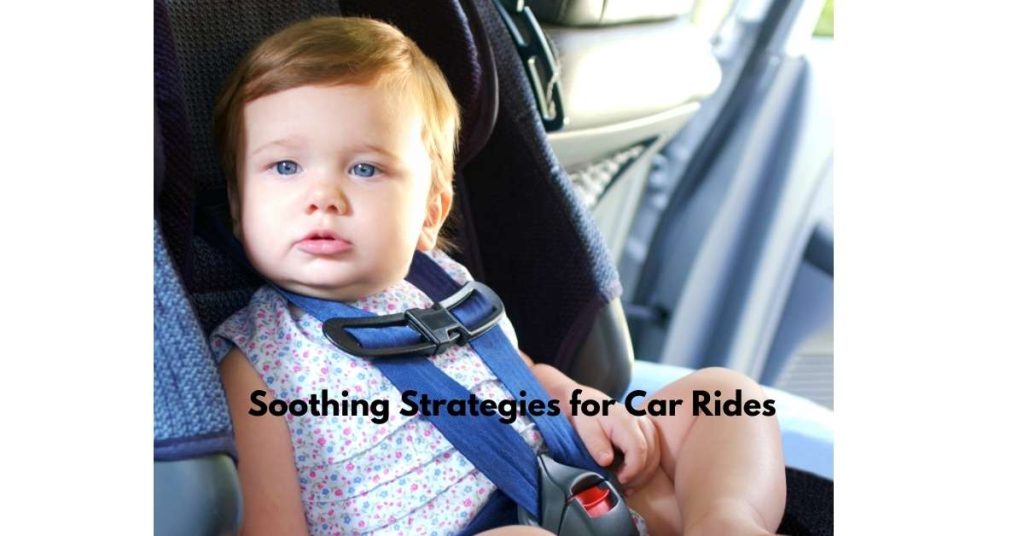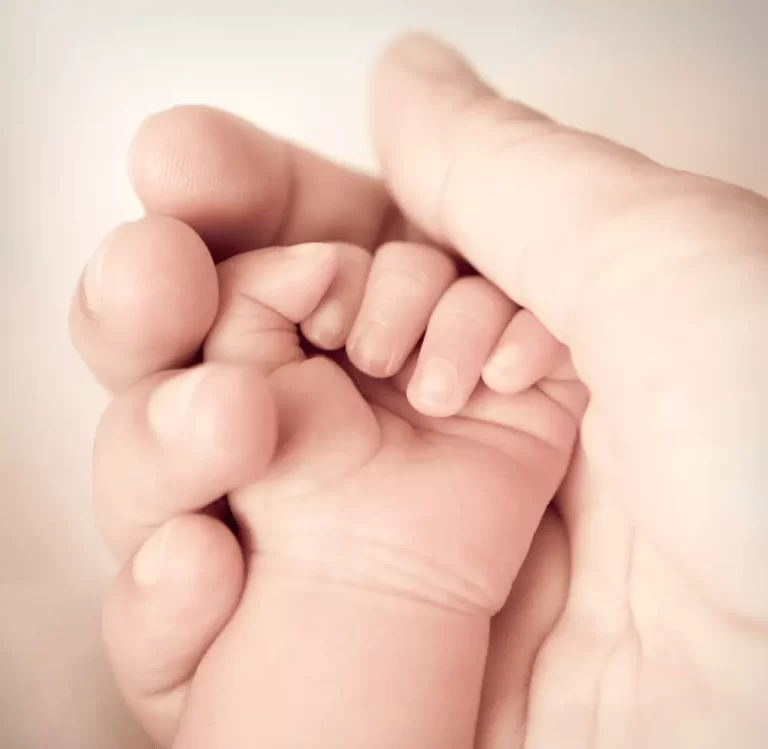My Baby Cries Hysterically in the Car: Causes and Solutions

Navigating car rides with a baby who cries hysterically can be a challenging experience for any parent. These episodes not only leave caregivers feeling helpless but can also create safety concerns while driving. Understanding why my baby cries hysterically in the car and how to soothe them can turn a stressful journey into a peaceful one.
Several factors contribute to a baby’s distress during car rides, including discomfort, hunger, or the lack of visual stimulation. The enclosed environment of the car seat can be unsettling for some infants. Strategies such as ensuring the baby is comfortably strapped in, using soothing music or white noise, and adjusting the car’s temperature can make a significant difference.
For those who find themselves in this common parenting dilemma, implementing specific techniques can lead to more enjoyable trips.
One approach is using distractions like musical toys or pacifiers, which have been useful for many parents dealing with this issue. Reading insights from other parents on forums like What to Expect can provide additional ideas and comfort, showing that solutions are at hand.
Understanding Your Baby’s Distress
Babies often cry in the car for various reasons, including discomfort, anxiety, or sensory sensitivity. It’s crucial to recognize signs of overstimulation and the different levels of sensory sensitivity that may affect them.
Reasons Babies Cry in the Car
Traveling by car can be unsettling for some babies. They may cry due to the restrictive nature of car seats, discomfort from temperature changes, or unfamiliar surrounding noises. The feeling of confinement in a car seat might also contribute to their distress.
The motion of the car, while soothing for some, may be disorienting for others. Hunger or a soiled diaper can also amplify crying episodes. Addressing these factors by ensuring comfort and regular breaks can help soothe the baby.
Signs of Overstimulation and Anxiety
Overstimulation occurs when babies are exposed to more stimuli than they can process. In a car, lights, sounds, and vibrations can overwhelm them, leading to anxiety and crying. They might turn their head away, clench fists, or cry intensely as common signs.
Families should monitor and minimize these stimuli where possible. Reducing noise with calming music and controlling light exposure by using sunshades are effective strategies. Observing the baby’s reactions can help identify specific triggers that need addressing.
Differences in Sensory Sensitivity
Each baby has different sensory thresholds. Some may find the sounds and movements of a car soothing, while others might react negatively due to increased sensory sensitivity. Babies with higher sensitivity may react to subtler disruptions like the hum of the engine or road bumps.
Recognizing these differences and accommodating them by providing a comforting environment can be beneficial. Soft toys or familiar items can help create a reassuring atmosphere. Parents should experiment with different environments to see what best suits their baby’s comfort level.

Soothing Strategies for Car Rides
Ensuring a peaceful car ride involves several effective techniques, including preparing your child before the trip, providing comforting items and toys, and ensuring car seat comfort and safety. Each approach aims to ease the baby’s discomfort and reduce crying episodes.
Pre-Ride Calming Techniques
Before embarking on a journey, setting a calming environment can significantly benefit both baby and parent. This might include feeding the baby to ensure they aren’t hungry and checking for a clean diaper to avoid discomfort mid-ride.
A predictable pre-ride routine can also help. A soothing bath or gentle massage can relax the baby, making them more likely to rest during the journey. Parents may also consider scheduling trips around nap times. This timing increases the chances that the baby will sleep through the ride, minimizing distress.
Comforting Items and Toys
Familiar items can be a great source of comfort for babies in the car. A favorite blanket or stuffed toy can provide a sense of security amid the unfamiliarity of a moving vehicle. Including these in your travel essentials list is beneficial.
Music or soft white noise can also have a calming effect. Musical toys or a playlist of gentle tunes may help distract from the motion and sounds of the car. In some cases, having a soft book or a safe rattle can offer additional distraction, keeping the baby engaged throughout the journey.
Car Seat Comfort and Safety Checks
Ensuring the car seat is comfortable and correctly installed is crucial for a baby’s well-being during travel. Parents should check that the straps are not too tight and that there is adequate cushioning, especially around the head and neck.
Temperature is another important consideration. Adjusting the car’s climate to a comfortable level can prevent irritability due to being too hot or cold. Regular checks on these aspects can lead to more pleasant journeys for all.
For more detailed information on strategies, consider exploring resources like BabyDoddle and The Experienced Mama.
Creating a Positive Environment
A comfortable and soothing environment in the car can help calm a baby who cries hysterically. This involves playing gentle sounds, ensuring the space is at a comfortable temperature, and providing interesting visuals that can capture the baby’s attention.
Playing Soft Music or White Noise
Soft music or white noise can help create a calming atmosphere in the car. Gentle tunes, such as lullabies or classical music, can soothe a restless baby by mimicking familiar bedtime sounds. Portable white noise machines or smartphone apps can provide continuous soothing soundscapes during the drive.
Parents might find it helpful to experiment with different types of music and noises to see which ones resonate most with their little one. The key is consistency; regularly using the same sounds can create a sense of comfort and routine. Implementing a steady auditory environment can significantly reduce anxiety and crying.
Maintaining a Comfortable Temperature
Ensuring the car’s interior is at an optimal temperature is crucial for a baby’s comfort. Babies are sensitive to temperature changes and may cry if they are too hot or too cold. Checking the car’s HVAC settings before starting a trip and making adjustments as needed can help maintain comfort.
Light blankets or sunshades can prevent overheating due to direct sunlight, while appropriately dressing the baby in layers helps with warmth. Monitoring the baby’s clothing and removing or adding layers as needed can prevent discomfort. Parents should also be cautious about drafty windows or vents blowing directly on the baby.
Visual Stimulation and Distraction Methods
Distraction through visual stimulation can capture a baby’s interest and quell crying. Hanging colorful toys or mirrors within their line of sight can engage their attention. Also, interactive toys with lights or textures can be particularly intriguing and keep the baby occupied. Rotating these toys regularly or introducing new ones can sustain interest.
Visual stimulation not only distracts the baby from discomfort or boredom but also encourages their cognitive development. While installing these items, safety should be a priority, ensuring they are securely attached and do not pose any risk during travel. Engaging visuals can transform a distressed car ride into a more serene experience.
Adjusting Routines and Schedules
Adjustments to routines and schedules can help ease a baby’s distress during car rides. Identifying suitable timings and incorporating breaks can contribute significantly to enhancing comfort and minimizing crying episodes.
Choosing the Best Time for Car Rides
Selecting the optimal time for car rides is crucial for minimizing discomfort. Parents should consider scheduling car trips around their baby’s natural sleep and feeding cycles. Traveling right after a feeding can keep the baby satisfied and reduce crying due to hunger. Additionally, aligning travel times with nap schedules might promote sleep throughout the journey.
It can be beneficial to monitor the baby’s mood and energy levels throughout the day to identify when they are most content. This approach minimizes the potential for irritability during the ride. For example, if a baby generally has a calm period in the late morning after breakfast, this could be an ideal time for a car journey.
Incorporating Breaks During Long Trips
Long car journeys can be daunting for babies, and incorporating breaks is essential to maintaining their comfort. Regular stops provide an opportunity for the baby to stretch and change scenery, which can help dissipate feelings of restlessness. Aim for a brief stop every two hours during extended trips to allow the baby to release energy.
Stretching breaks are also useful for checking and changing diapers and offering a feeding if necessary. Creating a predictable routine with these stops can reassure the baby and reduce anxiety. Parents should also carry a small kit with essentials like toys, snacks, and a blanket to keep the baby engaged and comfortable during both the journey and breaks.
Professional Insights and Advice
Parents often face challenging situations when their baby cries hysterically during car rides. It’s crucial to know when to seek professional help and how child development specialists can assist in addressing this issue.
When to Consult a Pediatrician
Persistent crying in a baby, especially during car rides, can sometimes indicate underlying medical concerns. Parents should consider consulting a pediatrician if the crying is accompanied by other symptoms like feeding difficulties or noticeable discomfort. A pediatrician can assess whether factors such as reflux—known to induce crying during travel—are present.
It’s important to observe the baby’s behavior patterns and note any changes in sleep or eating habits. If there is an unusual frequency or intensity in the crying, medical advice can help determine if there are health issues that require treatment.
Role of Child Development Specialists
Child development specialists play a significant role in understanding and managing a baby’s crying episodes in the car. They offer insights into behavioral and environmental factors that might trigger distress during travel. With their expertise, they can devise strategies tailored to encourage a calming car environment.
These specialists guide parents on adjusting routines and suggest tools or toys that engage and soothe the baby, addressing any anxiety associated with travel. Their support is particularly valuable if the crying is linked to developmental phases or a heightened response to stimuli such as noise or motion seen during car rides.
Product Recommendations
When traveling with a baby, comfort and safety are essential. Choosing the appropriate car seat can significantly impact your baby’s comfort level, while useful gadgets enhance the car experience by addressing common discomforts.
Selecting the Right Car Seat
Choosing the right car seat is crucial for both safety and comfort. It’s essential to find a seat that supports your child’s head and neck properly. It’s recommended to opt for seats with adjustable headrests and reclining features to accommodate growing babies. Consider checking if the seat has adequate padding and breathable fabric to keep the baby comfortable over long journeys.
Doona Car Seat & Stroller, Nitro Black – All-in-One Travel System0

Parents should ensure that the seat meets the latest safety standards. This can be verified by looking for safety certifications. A car seat that fits well in both the car and the stroller can be a versatile choice for parents on the move.
Using a seat that is easy to install and adjust can save a great deal of hassle during trips. It can help to diminish crying caused by discomfort or improperly secured seats.
Useful Gadgets for Car Comfort
Incorporating certain gadgets can significantly improve the car experience for a crying baby. Sun shades protect delicate skin from harsh sunlight and can reduce glare, making naps more restful.
Car seat mirrors allow parents to keep an eye on the baby without turning around, providing both reassurance and safety. Another useful gadget is a white noise machine or a toy that plays soothing sounds, which can help calm the baby and recreate the comfort of home.
Utilizing travel organizers to keep toys, snacks, and diapers within reach can make the journey smoother and less stressful. Exploring these options can contribute to a more comfortable ride, reducing the likelihood of crying from boredom or discomfort.

Frequently Asked Questions
Parents often face challenges with babies who cry hysterically during car rides. This section addresses common questions about soothing techniques, potential distress causes, and effective strategies to ensure a smoother journey with your infant.
How can I soothe my baby who cries hysterically in the car seat?
Trying to identify the source of discomfort or anxiety can be helpful. Ensuring the car seat is properly adjusted, using soothing music, or providing toys for distraction are often effective. Adjusting the car’s environment, such as reducing noise or using sunshades, may also help alleviate distress.
Is it harmful to allow my infant to cry in the car seat during travel?
While short periods of crying are usually not harmful, prolonged distress can be stressful for both the baby and parents. It’s important to stop when safe and address any signs of hunger, discomfort, or other needs that might be causing the infant to cry.
What strategies can help my 3-month-old tolerate car rides without distress?
Parents can try feeding their baby before the trip to ensure they are full and content. Another useful strategy is timing car rides during naps. Utilizing soothing tools like soft music or white noise can also be beneficial in helping a baby stay calm during travel.
Can reflux cause my baby to scream in the car seat, and how can it be managed?
Reflux might contribute to discomfort during car rides. This can often be managed by ensuring the baby is in an upright position for some time after feeding and making sure feeds are appropriately spaced before travel. Consulting a pediatrician for more personalized advice is also recommended.
What techniques are effective for calming a baby who hates the car seat at night?
Establishing a calming bedtime routine before night trips can help. Using dim lighting inside the car and maintaining a quiet environment are also effective. Having a familiar blanket or toy may provide additional comfort to the baby during nighttime drives.
Why might my 6-month-old be experiencing extreme distress in the car seat?
A 6-month-old may experience distress due to teething, separation anxiety, or discomfort from the car seat itself. Parents should check for any signs of physical discomfort from the seat’s fit and consider consulting a healthcare professional if the crying persists or if they suspect any health-related issues.





